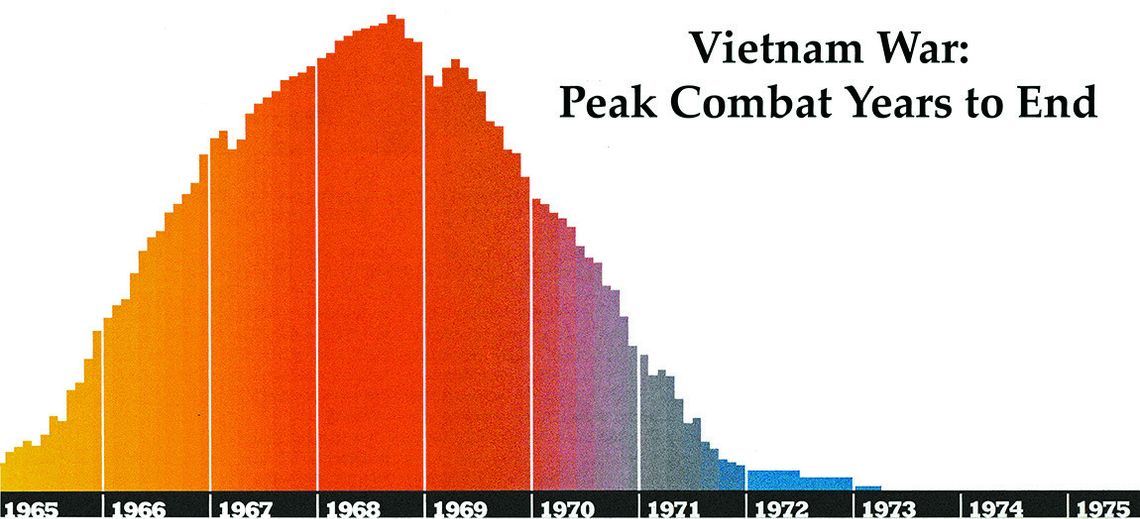Commemoration Of War’s End In May
May is a month filled with significant times for honoring and remembering our military heroes. Memorial Day is the most recognized annual date, but this year there is another important remembrance -- the 50th commemoration of the end of the long Vietnam War on May 15, 1975.
There are a few semi-official dates for the end of this traumatic war: an early end date was in January, 1973 when the warring parties agreed to cease hostilities at the Paris Peace Talks.
Two years later, North Vietnam invaded the south again. The last U.S. Marines left the Saigon Embassy on April 30, 1975. According to an article in the latest Vietnam Veterans of America Magazine, “This was the largest evacuation ever conducted by the U.S. military.”
Then President Ford declared the end of the “Vietnam Era” on May 7, 1975, the official end date in the U.S. Code. This year we recognize that date as the 50th commemoration of the end of the “American War in Vietnam.”
The start of that unpopular war is generally recognized as in August, 1964, when troop deployments rapidly escalated after the Gulf of Tonkin Incident early that month.
According to an article in the latest VVAMagazine, “American involvement in Vietnam spanned 30 years. U.S. military personnel were on the ground starting in September, 1945. The firstAmerican to lose his life in Vietnam was Lt. Col. A. Peter Dewey. He was shot while riding in a Jeep in Saigon on Sept. 26, 1945.”
In the period of significant U.S. troop commitment starting in 1965, “a total of 2.7 million U.S. military served in-country and six million served elsewhere in support of the war,” the VVA reported.
Total killed numbered 58,318. These are the names on the memorial “Wall” in Washington, D.C., according to the Vietnam Veterans Memorial Foundation.
The military draft was another controversial part of the Vietnam War history.
Unlike World War II, the large majority of American soldiers who participated in Vietnam, and who were killed in combat, were volunteers and not draftees.
According to the website draftvietnam. com, “between 1964 and 1973, about two million men were drafted into the military, and 650,000 would serve in Vietnam.” This was about 25 percent of the total in-countryAmerican forces.
To contrast, in the massive U.S. draft in WWII, 66 percent of those who served in the armed forces were drafted.
In the second half of 1965, there was a dramatic increase in numbers of men drafted each month. Most draftees went into the Army, but during the war a total of 42,790 went into the Marine Corps President Nixon ended the draft on December 29, 1972. This same month saw the last men drafted as the U.S. ended ground participation in Vietnam.
The draft during this period was not popular, with draft dodging taking several forms. President Ford announced amnesty for draft evaders in 1974.
The Vietnam War is the last U.S. conflict into which anyone was conscripted.
National Military Appreciation Month According to the website military.com “May is Military Appreciation Month, a special time for those in and out of the military. It is a time designated to honor and recognize the contributions, sacrifices, and service of the members of the armed forces, past and present. We honor the members of the Army, Navy, Air Force, Coast Guard, Marines, Space Force and National Guard as well as the contributions of their spouses and families.
“Congress designated May as National Military Appreciation Month in 1999 to ensure the nation was given the chance to publicly show their appreciation for troops past and present.”
Recently The American Legion published articles about the all-volunteer military today and the challenges it faces in a politically divided nation.
Volunteers are dwindling, the legion states in its magazine. “Fewer than 23 percent of Americans are eligible to serve.”
The declining numbers of volunteers “reflects a growing distrust of the most sacred asset of a constitutional republic. Public faith in a professional military is indicative of that institution’s legitimacy in a democracy.”
This civilian-military dynamic is a “Sacred Relationship,” the legion says.
The good news: there is room for optimism about the military even in troubled times. The legion article states, “Trust in the military has been a staple of U.S. democracy for a century.”
While willingness to serve is an obstacle to recruitment, the military remains a viable career. A recent Military Family Lifestyle survey showed 69 percent of active-duty families say military service has added value to their lives.
The legion adds that “45 percent of Americans believe that the public truly appreciates these families sacrifices.”
However, many military families say they need two incomes for their family’s well-being. Family morale is affected by frequent deployments, pay, employment opportunities, education, housing and child care issues.
While wars happen, the military is “the primary tool of peace,” the legion says.
Alegion spokesman added, “A small percentage of Americans choose to serve in the military, and the best way to show our appreciation is by reciprocating their commitment. We must prioritize military quality of life.”
Sources: VVA Magazine, The American Legion Magazine, &



